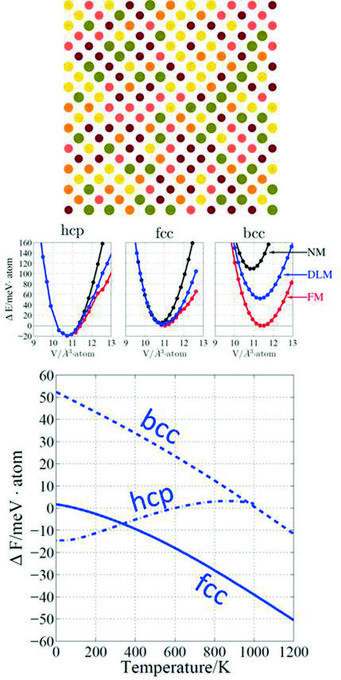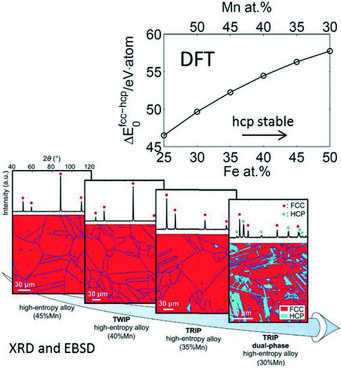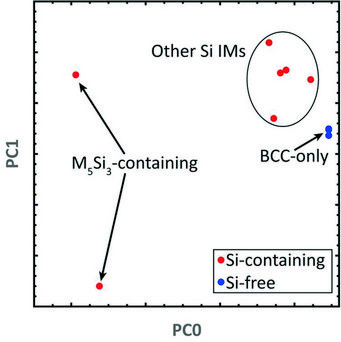Alloy Development to the nth-dimension: high entropy alloys
From an engineering point of view, exploring the vast compositional space of a HEA system is a significant chal-lenge. The conventional trial and error approach is impractical for rapidly screening hundreds of new alloys. Therefore the accelerated discovery and development of HEAs relies on physical-based modelling and other simulation tools. For rapid screening and development, these tools should not only be limited to the prediction of the constituent phases, but they must also be able to predict the functional and mechanical properties of new al-loys for various applications.
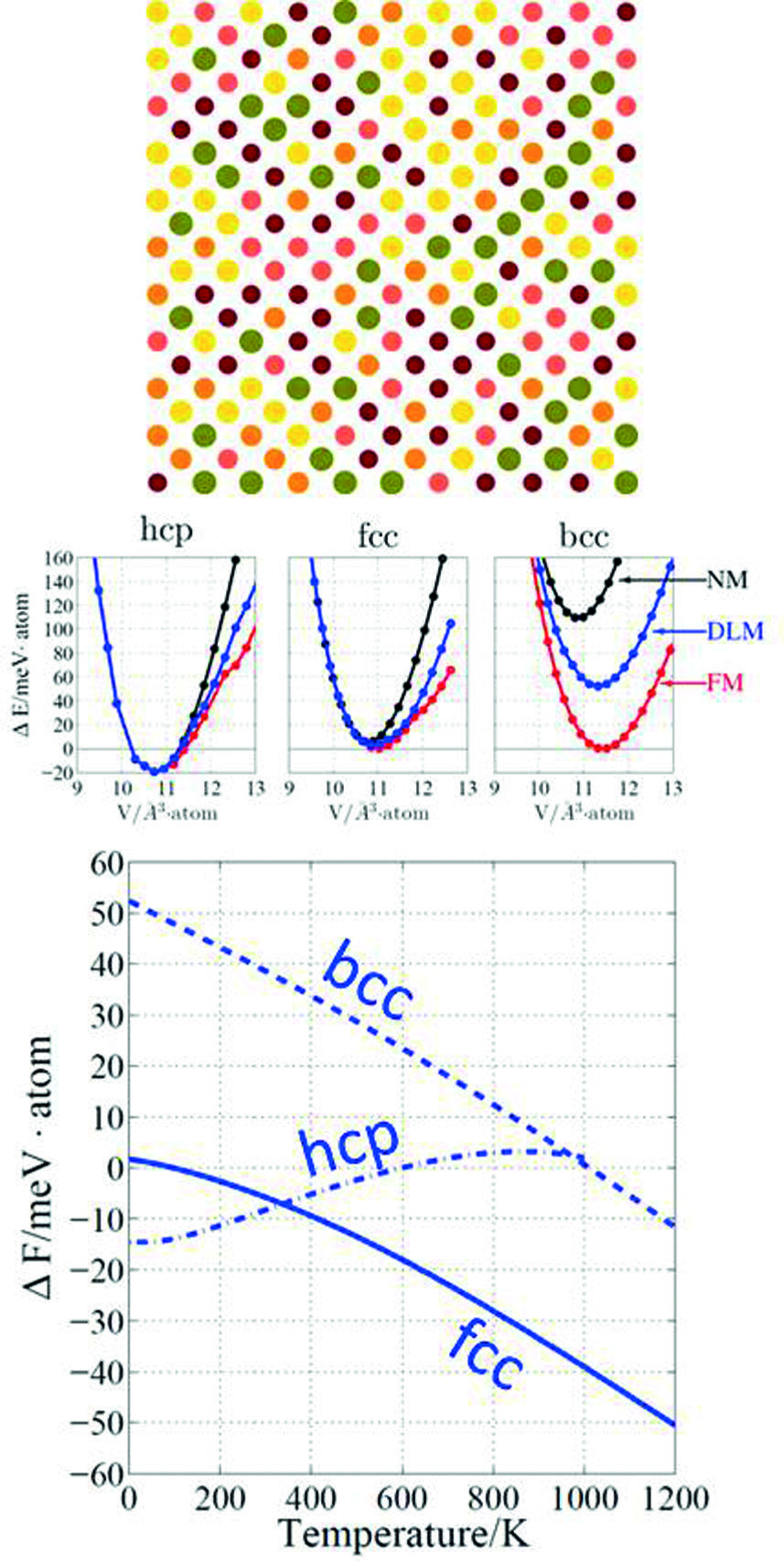
Fig. 1: Thermodynamics of Fe20Mn20-Co20Cr20Ni20 at ground state and finite temperature.
Our HEA design team consists of members from different backgrounds, ranging from metallurgists to physicists, and the team encompasses a wide spectrum of scientific and engineering expertise. We strive for a bottom-up approach where state-of-the-art atomistic calculations (Fig. 1) guide alloy design. The team is applying and developing state-of-art theoretical, synthesis, and characterization methods. The combination of ab initio calculations and rapid alloy prototyping (see 01/2013 newsletter) will provide a high-throughput method for rapidly screening, producing, and characterizing new materials.
At the moment, we are developing new HEAs in three areas: (1) structural alloys exhibiting unique strengthening mechanisms, (2) tuneable magnetic cooling alloys, and (3) ultra-high-temperature structural materials.
Unique strengthening mechanisms in FeMnCoCrNi system
The Fe20Mn20Co20Cr20Ni20 alloy was the first HEA system discovered that exhibited a single fcc solid solution phase in the as-cast state. The FeM-nCoCrNi alloy exhibits high fracture toughness (200 MPa m1/2) down to cryogenic temperatures due to the increasing stability of the hcp phase at lower temperatures, as shown in Fig. 1. The increasing stability of the hcp phase promotes the formation of mechanical twinning, which prevents crack propagation.
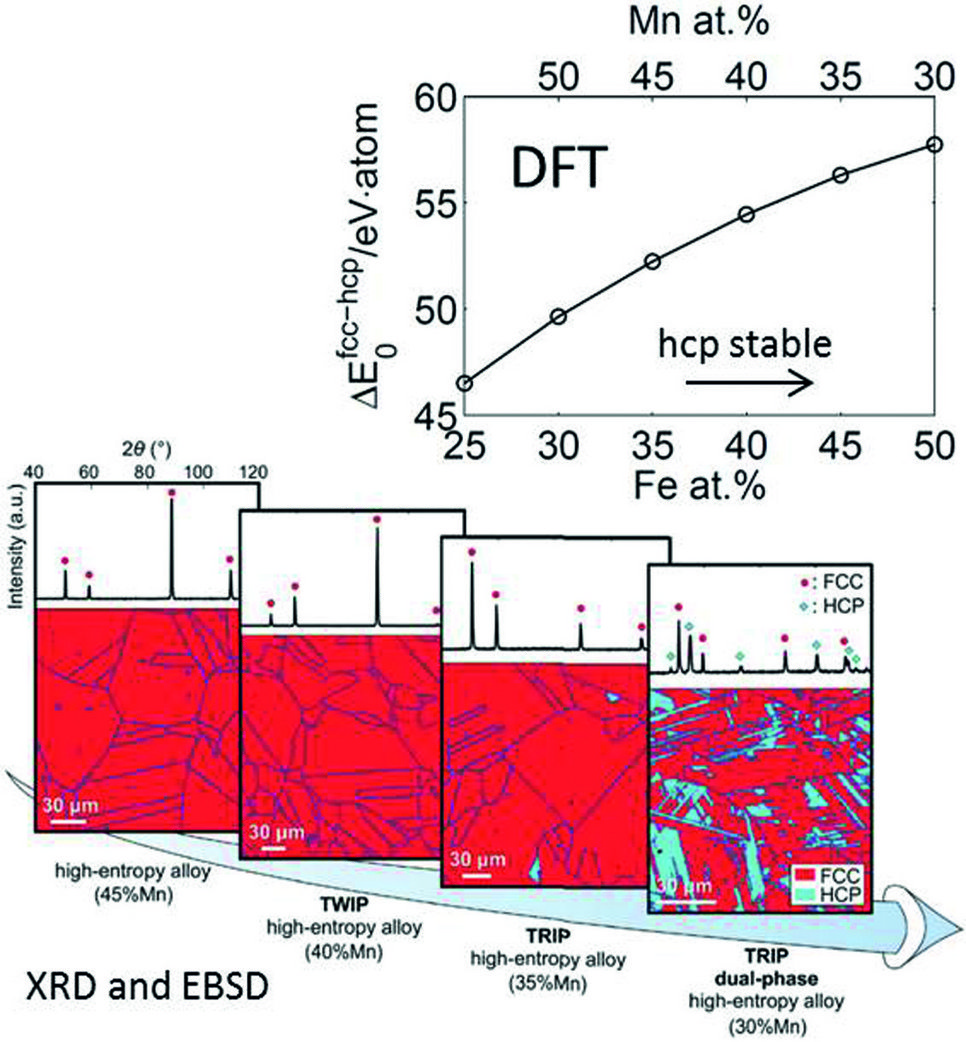
Fig. 2: Design of Fe80-xMnxCo10Cr10 for TWIP or TRIP.
Following this design strategy of enhancing the fracture toughness, the composition can be further tailored for targeted properties and economic benefits. By varying the Mn content in Fe80-xMnxCo10Cr10 alloys, we can con-trol the fcc and hcp phase stability in order to alter the deformation mechanisms under tension (Fig. 2). Ab initio calculations reveal that the hcp phase becomes more stable with increasing Fe content substituted by Mn. From these efforts, we can provide alloy design guidelines for promoting hcp phase formation, which enhances strength through the TWIP and TRIP deformation mechanisms.
Tuneable magnetic refrigeration materials
Compared with the conventional gas compression-evaporation cooling process, magnetic refrigeration has drawn great attention due to its higher energy efficiency and ozone / green-house gas-free operation. Employing ab initio methods, we are able to explore a broader composition range beyond experimental compositions in order to obtain a desirable working temperature, such as room temperature for house hold refrigerators, and at the same time maximize its cooling capacity. Compared with current room temperature magnetic refrigeration materials, these alloys offer significant benefits including cheaper and less toxic elements and easy fabrication for mass production.
Refractory-based high temperature alloys
New refractory-based high entropy alloys have recently been investigated for use as high temperature materials in future gas turbine engines and hypersonic vehicles. While Mo- and Nb-based alloys have been proposed as alternative high temperature materials for gas turbine engines, these alloys do not possess an adequate balance of properties. For this reason, new refractory-containing alloys based on the HEA concept are being developed at the MPIE.
We choose an alloy element palette consisting of Hf, Mo, Nb, Ta, Ti, V, W, and Zr in order to promote the formation of a single high temperature body-centred cubic (bcc) phase. Al, Cr, and Si are also considered in the palette to improve oxidation resistance and to promote the for-mation of intermetallic (IM) phases that can help strengthen the alloys. Thermodynamic calculations have been carried out for four-component alloys over a wide range of compositions in order to rapidly predict phase stability. For four-component alloys, 87,568 unique compositions over 36 alloy systems were identified.
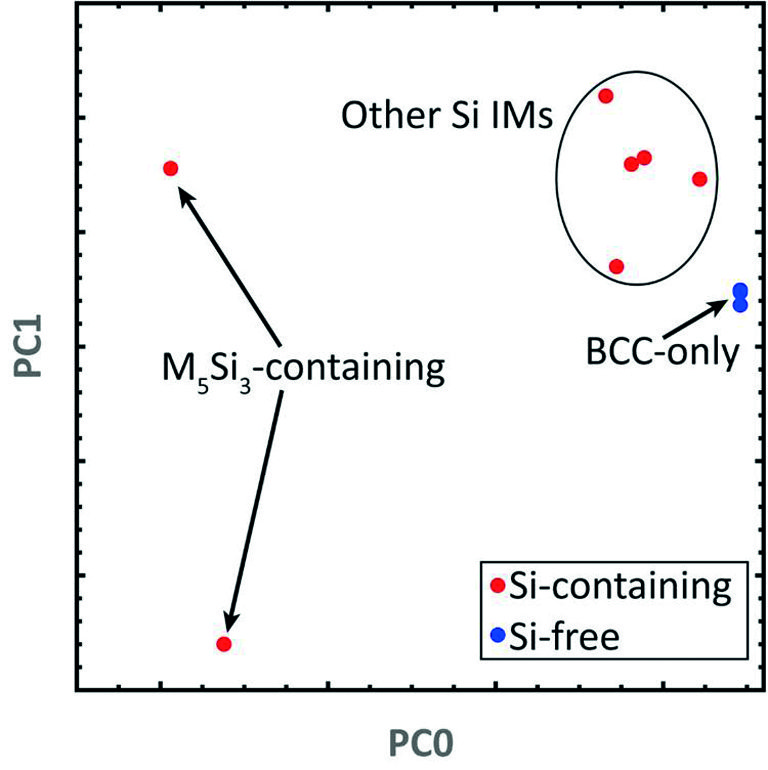
Fig. 3: Principal component analysis of phases present in 36 alloy systems.
In five- and six-component alloys, millions of unique alloy compositions among hundreds of alloy systems are possible from this elemental palette because we do not limit alloy compositions to equiatomic ratios. To analyse the data, we are utilizing advanced computational methods that include data mining, cluster analysis, and principal component analysis in order to rapidly assess higher-dimensional composition space. For example, principal component analysis can easily group alloy systems based on the predicted phase equilibria at the melting temperature, as shown in Fig. 3. From this clustering, we can easily identify alloy systems that contain similar IM phases that can be used to strengthen the alloys.
The relatively new idea of high entropy alloys has motivated researchers to explore previously unknown composition space, and this drive for identifying new and useful alloys materials will undoubtedly impact the transportation and energy industries by providing novel alloys that exhibit unique properties. The proposed composition space for high entropy alloys and their derivatives is massive, and the tools and techniques we are developing here at the MPIE will help engineers to rapidly screen and further develop new material systems.
Authors: Duancheng Ma & Michael Titus
